Unless you have a few weeks to dedicate to your travels, it’s impossible to see everything Nicaragua has to offer–even then, you’d have a tight schedule. The best way to tackle the country is to learn about each region, then plan according to your interests and favorite activities. From vibrant nightlife to exploring history to outdoor adventures, Nicaragua won’t disappoint.
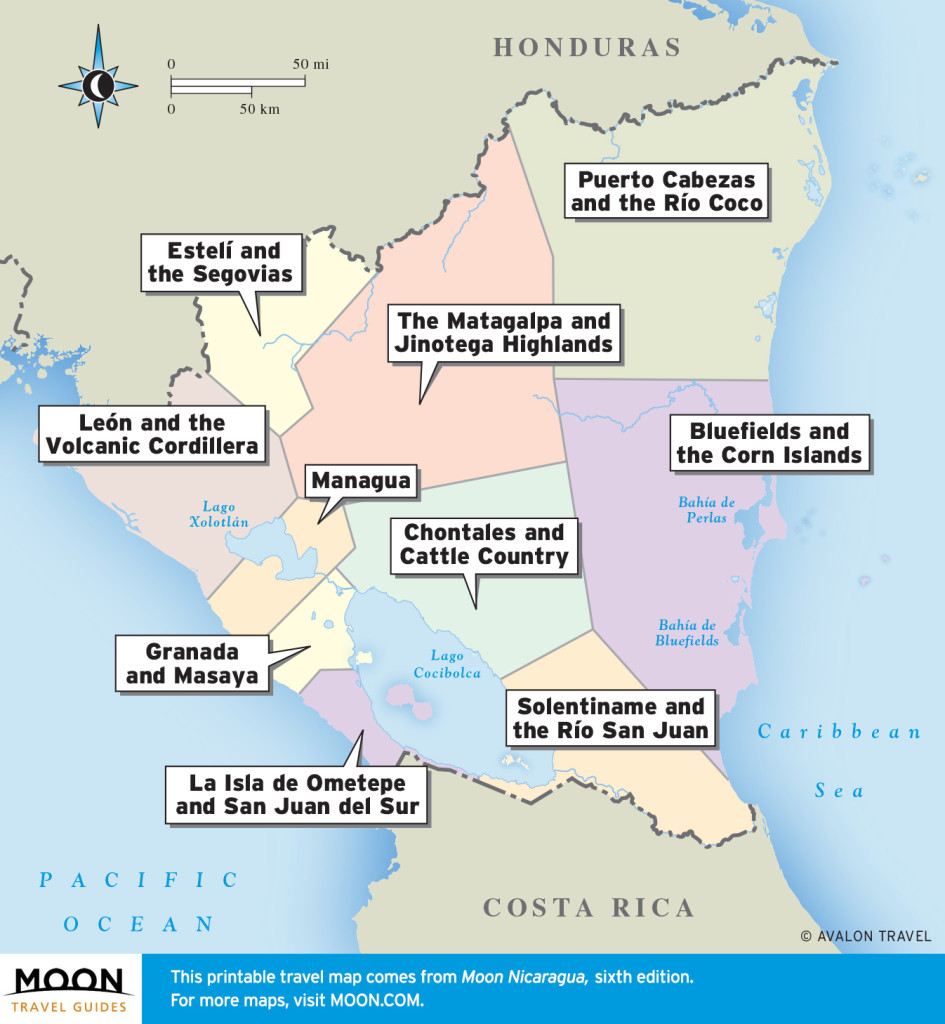
Regional Map of Nicaragua
Although you won’t find the capital at the top of any tourist destination lists, the city of Managua is full of history. Managua is also the country’s transportation hub. If you find yourself passing through on a weekend, make sure to check out the vibrant nightlife.
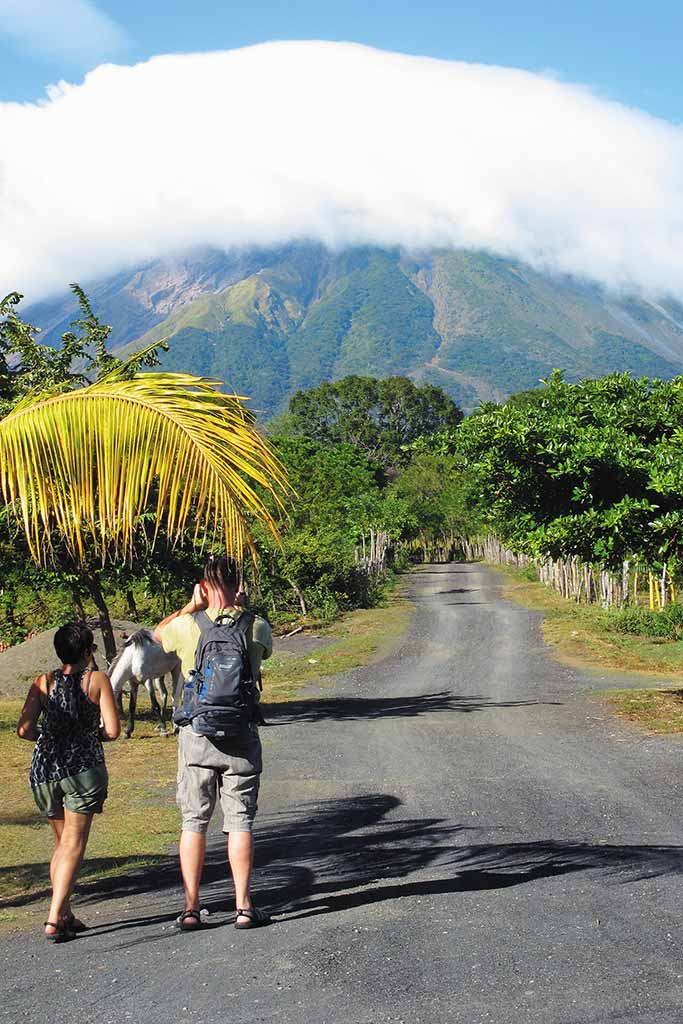
Reserva Charco Verde. Photo © Elizabeth Perkins.
One of Nicaragua’s most sought-after destinations, Ometepe Island offers a little bit of everything, with options for every kind of traveler. Its twin volcanoes offer hiking treks full of howler monkeys, tropical plants, and waterfalls. There are beaches and lagoons for swimming, and plenty of restaurants that cater to tourists. San Juan del Sur on the Pacific coast is popular with foreigners. In addition to jaw-dropping sunsets, it offers a raging nightlife. Tola is generally calmer and less full of tourists. Try surfing, fishing, or sailing on one of the region’s many beaches.
León and Chinandega are historical colonial cities with vibrant urban life. Lots of bars and restaurants offer international food and serve clientele from all over the world. This is also the hottest region of the country. Escape the heat on the nearby Pacific coast where you can surf and observe sea turtles. This is the region that made volcano boarding a sport (on Cerro Negro). There are many remote protected areas throughout the Cosigüina peninsula.
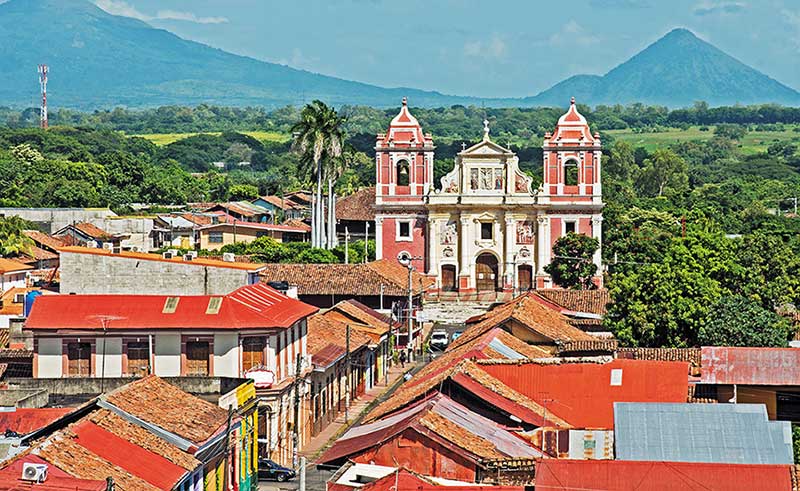
La Iglesia El Calvario in Chinandega. Photo © La Iglesia El Calvario in Chinandega. Photo © Otto Dusbaba/123rf.
This mountainous northern region boasts an impressive landscape. Try locally grown coffee, tobacco, and corn products. Take a dip in the Estanzuela waterfall in the Tisey Nature Reserve. Meet other travelers and shop for mementos in the historical city of Estelí. From there you can head north towards the Honduran border and rock climb in the Somoto Canyon, or take a guided swimming tour.
This heavily forested region is full of small coffee farming communities that open their homes to visitors. The hilly, laid-back city of Matagalpa has impressive views of the surrounding mountains, and makes a great base for traveling through the area. It’s easy to find popular woven products from the nearby women’s cooperative in El Chile. Head north to Peñas Blancas, the mouth of the enormous biological reserve, Bosawás, where you can hike and swim in a tropical paradise.
Cattle ranches and farms populate this rural area. You can sample delicious cheese in Boaco, known for its dairy products. Most tourists pass right through on their way to El Rama, so there are few foreign travelers in this region. However, hot springs, horseback riding, and hiking await the more curious traveler.
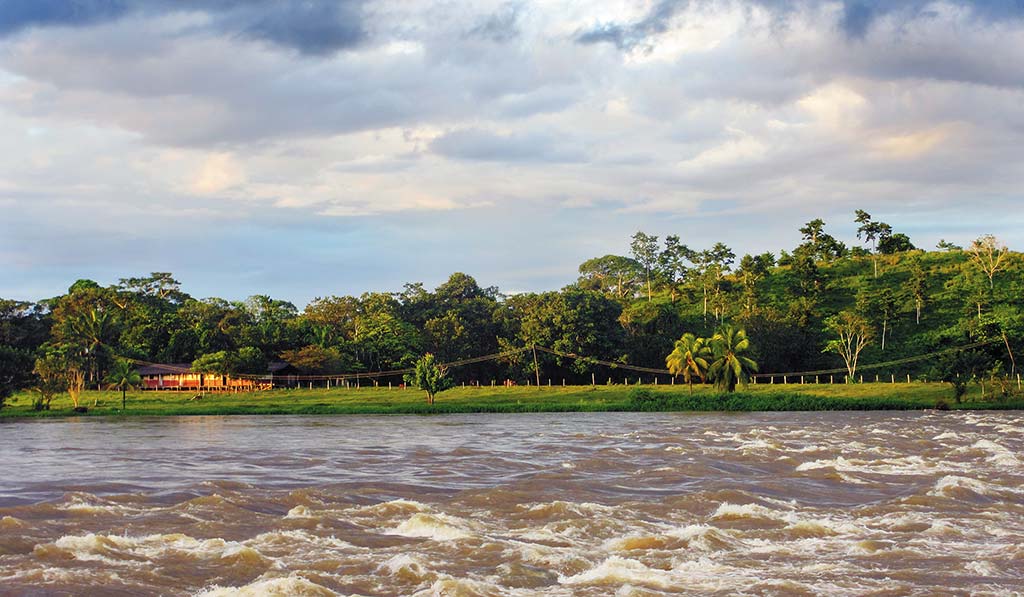
Río San Juan near El Castillo. Photo © Elizabeth Perkins.
This river along the Costa Rican border starts at the Atlantic coast, emptying into Lake Cocibolca. It’s not easy to move around this remote area. The beautiful Solentiname archipelago in Lake Cocibolca is worth the trip for impressive landscapes and an up-close look at a thriving artist colony. Along the river, you’ll come across biological reserves, lagoons, and the four-centuries-old fort at El Castillo.
The Autonomous Region of the South Caribbean Coast (RACCS) might as well be a different country. You’ll hear English and a variety of native languages spoken here. Experience Creole culture and cuisine in Bluefields before checking out the nearby Pearl Cays or Greenfields reserve. The Corn Islands offer diving and, of course, clear blue Caribbean water. There’s no highway connecting the Pacific side of the country to the Atlantic. You can take a plane straight to Bluefields or Corn Island from Managua, or take a 10-hour bus and boat trip from the capital.
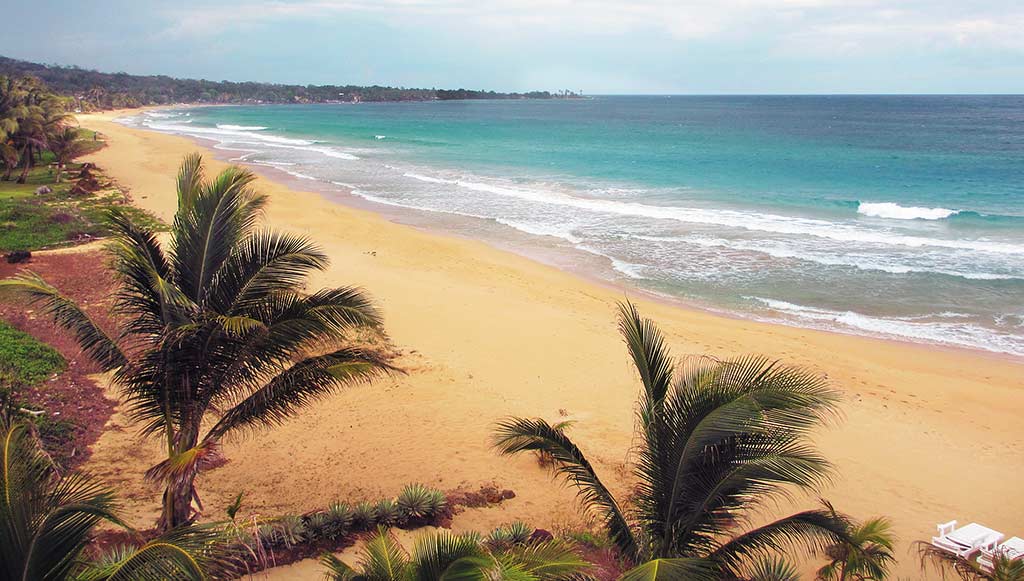
Long Beach on Big Corn Island. Photo © Elizabeth Perkins.
This area is not for the casual traveler. The Autonomous Region of the North Caribbean Coast (RACCN) is heavily marginalized by the central government in Managua. Inhabitants are mostly Miskito and not accustomed to foreigners. However, Bilwi (also known as Puerto Cabezas) has basic oceanfront services where you hire tour guides to take you to nearby rivers and beaches. Adventurers can wander to their hearts content among the riverside communities of the Río Coco. There is no road directly connecting the RACCN to the Pacific nor to the RACCS to the south. From Managua, the region is accessed by plane or by a very arduous bus journey.
Excerpted from the Sixth Edition of Moon Nicaragua.